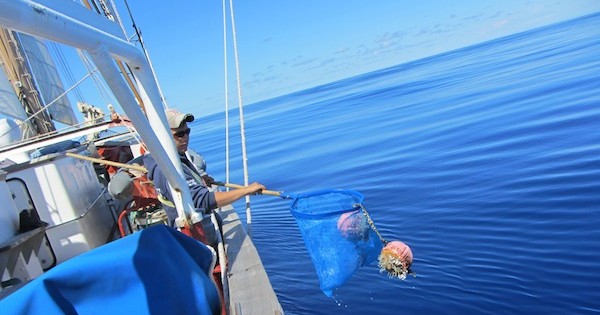
The washing machine is one modern convenience for which I feel daily gratitude. I am never quite sure how my family manages to accumulate so much laundry, and perhaps we would be more reluctant to discard slightly worn clothing if we had to go down to the river and pound it on rocks. Washing machines liberated women from two days per week spent soaking, boiling, pummeling, rinsing, and wringing the wash—not to speak of the subsequent starching and ironing—and that’s a life I’d never want to experience. So I was quite perturbed to discover that washing machines are a major source of “microplastics”—particles less than one millimeter in diameter—polluting shorelines around the world.
An international team of environmental scientists sampled 18 sites on sandy beaches on six continents, from Australia to North America, and found polyester, acrylic, and polyamide fibers contaminating shores “on a global scale.” Because the proportion of polyester found in marine sediments resembled those used in textiles, the researchers washed polyester fleeces and counted the number of fibers discharged into wastewater. The result: one synthetic garment can shed more than 1,900 fibers per wash cycle. The machines don’t filter out the microfibers, so they likely add “considerable numbers of microplastic fibers” to marine habitats, with unknown effects on the animals that ingest them.
Humans produce 245 million tons of plastic every year; only about one percent of it is recycled, and some inestimable portion of it ends up in the ocean. One new study now shows that plastic marine debris can form an artificial “microbial reef” or community of microbes that investigators have dubbed the “plastisphere.”
Microbial ecologist Linda Amaral-Zettler of the Marine Biological Laboratory in Woods Hole and her colleagues collected plastic marine debris from multiple locations in the North Atlantic and discovered a zoo of microbes living—and feeding off—the plastic. This microbial world is mostly bacteria, but also includes diatoms—single-celled algae—as well as single-celled protozoa that feed with the aid of tentacles. Round cells embedded in rows of microscopic pits in the plastic indicate that some of the microbes are degrading or digesting it—which, as Amaral-Zettler explains in a recent email exchange, may be doing more harm than good. “If they are merely making the plastic smaller and not breaking it down into essential elements … this may be making it more bioavailable to the food chain; that’s bad,” she says. The researchers also found a relatively high incidence of bacteria from the genus Vibrio, some species of which can cause food-borne infections. So it’s possible that the plastic could serve as an agent of infectious diseases, since both birds and fish eat plastic marine debris.
Washing a blanket or discarding a plastic toy may seem like a simple, harmless act. But these studies show that our daily activities may affect the oceans in profound and irreversible ways. Plastic-dwelling marine microbial communities, Amaral-Zettler says, “may be changing the fundamental properties of the nutrient-poor open ocean habitat.”

